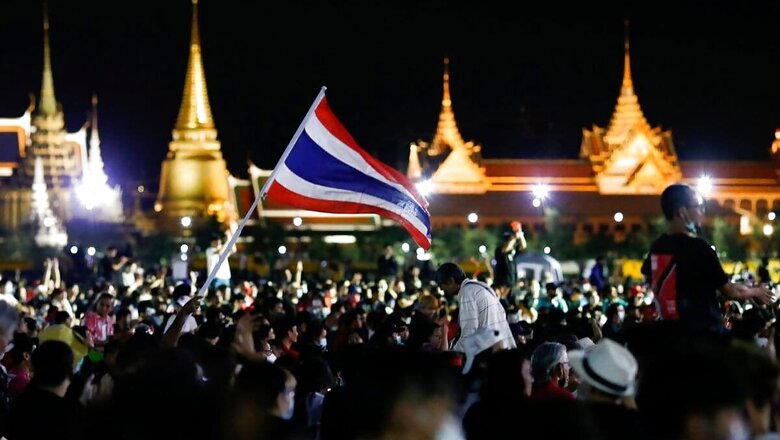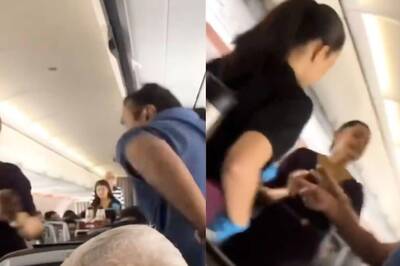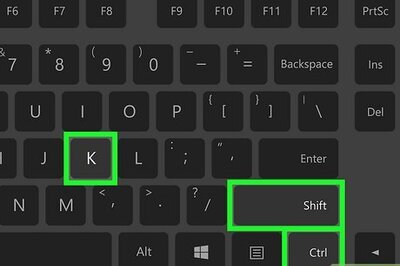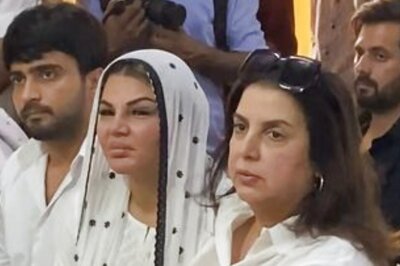
views
A pro-democracy movement led by student groups has gathered pace across Thailand for the last couple of months, with some activists openly calling for reforms of the kingdom’s unassailable monarchy.
Tens of thousands have turned out this weekend for a show of force in Bangkok, defying warnings from the premier that the nation could be “engulfed in flames” if they push too far.
Here is what we know:
What do the protesters want?
The protesters are rallying against the government of Prime Minister Prayut Chan-O-Cha.
The former army chief led a coup in 2014 and kept the kingdom under military rule for five years.
Under the junta, a new constitution was drafted before elections were held last year.
Prayut was voted in to lead a civilian government — a win analysts say was tilted by the new charter’s provisions.
Protesters say the whole process was a stitch-up and are calling for parliament to be dissolved, the constitution rewritten and an end to the harassment they are facing.
They also have a list of 10 demands for the monarchy, including throwing out a defamation law that shields the powerful royal family from criticism.
The law is one of the harshest of its kind in the world, carrying a jail sentence of up to 15 years per charge.
Why now?
Discontent has been simmering since February when the leaders of an opposition party, popular among young people, were banned from politics.
Many protesters say the move against the Future Forward Party was politically motivated.
A pandemic lockdown, which sent Thailand’s economy into freefall, exposed the chasm between the billionaire class and the poor.
And in June, prominent activist Wanchalearm Satsaksit, who had been living in self-exile in neighbouring Cambodia, disappeared.
Thailand’s social media-savvy activists lit up Twitter with their demands for answers.
The online campaign spilled offline mid-July and a wave of protests across the country began, with up to 30,000 turning out this weekend at the biggest rally since the 2014 coup.
We’ve seen Thai protests before. What’s different?
True, Thailand has seen a spin-cycle of violent street protests and military coups over the decades.
But in the past the protest movements had vast financial and political clout behind them.
Today’s student demonstrators say there is no single leader — a strategy partly inspired by the Hong Kong pro-democracy protests.
Daring to take on the taboo topic of the monarchy is also a first.
Under the constitution, the royals — including super-rich King Maha Vajiralongkorn — are supposed to stay out of politics, but they wield enormous clout.
Since the king took the throne in 2016, he has made unprecedented changes, taking direct control of the palace’s fortune and moving two army units under his command.
At his side are the arch-royalist military and powerful billionaire clans.
What’s the reaction?
Mixed. The student-led protests have drawn support from a broad demographic, including many from the working class.
The movement has also spread to high schools across the country, with teenagers tying white bows of solidarity in their hair and on backpacks.
But pro-royalist groups have held their own, smaller counter-demonstrations with mostly older protesters enraged at the perceived affront to the monarchy.
Army chief Apirat Kongsompong has ominously warned that “hatred of the nation” is an incurable disease.
Prayut has said Thailand would be “engulfed in flames” if the students push too hard, though he vowed “softer measures” against the weekend’s protesters.
So far more than two dozen protesters have been arrested, charged with sedition and breaking coronavirus rules, and released on bail.
What comes next?
Protesters have called for another rally on Thursday outside parliament as MPs debate potential constitutional changes.
They also want a general strike on October 14.
But beyond that it is hard to predict.
By tackling the monarchy, Paul Chambers of Naresuan University says the protesters have “effectively forced the genie out of the bottle”.
Historians — and even the student leaders themselves — have raised the spectre of a previous student-led movement.
That ended in October 1976 in what became known as the Thammasat University massacre.
Students protesting against the return of a military dictator were shot, beaten to death and lynched by state forces and royalist mobs.
Matt Wheeler of International Crisis Group points to the “clear pattern” of the state using deadly force against pro-democracy protesters.
“So much is at stake for those who benefit from the status quo that it would be imprudent to rule it out,” he told AFP.
But Thailand’s scrutiny by Western allies means using force would not be an option this time, surmises Titipol Phakdeewanich, political analyst at Ubon Ratchathani University.
If they crack down and students die, “that would be the end to the military’s legitimacy”.




















Comments
0 comment